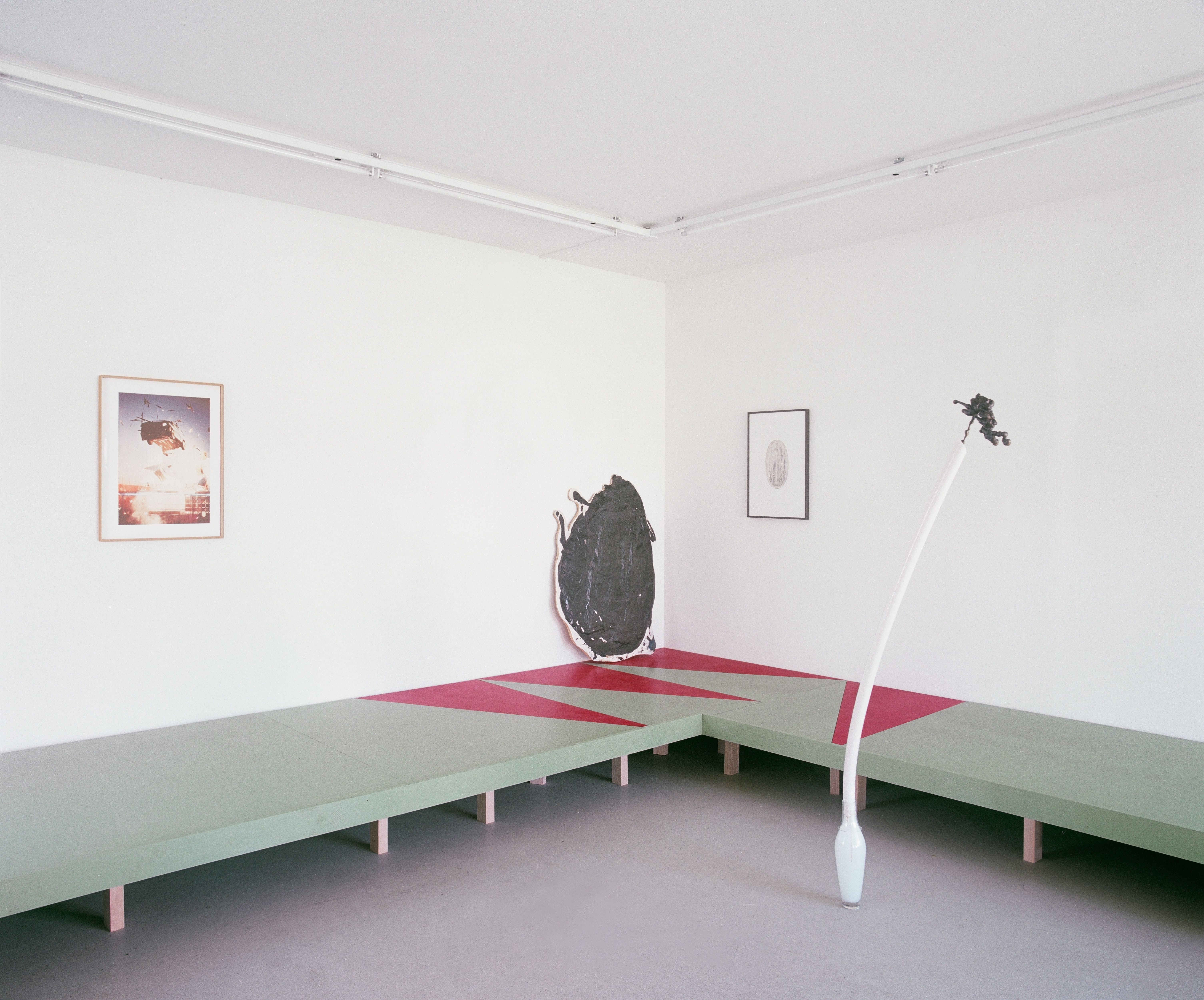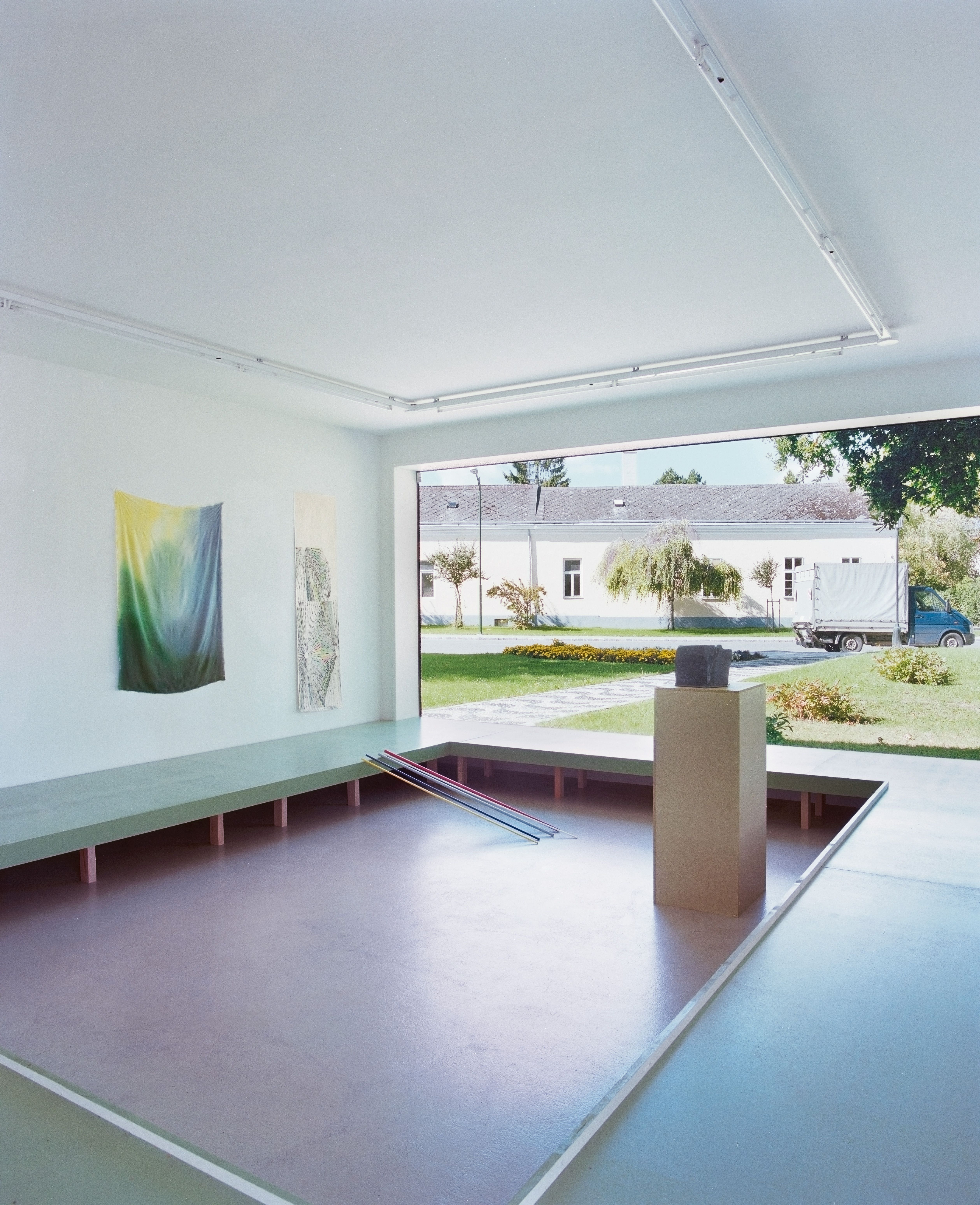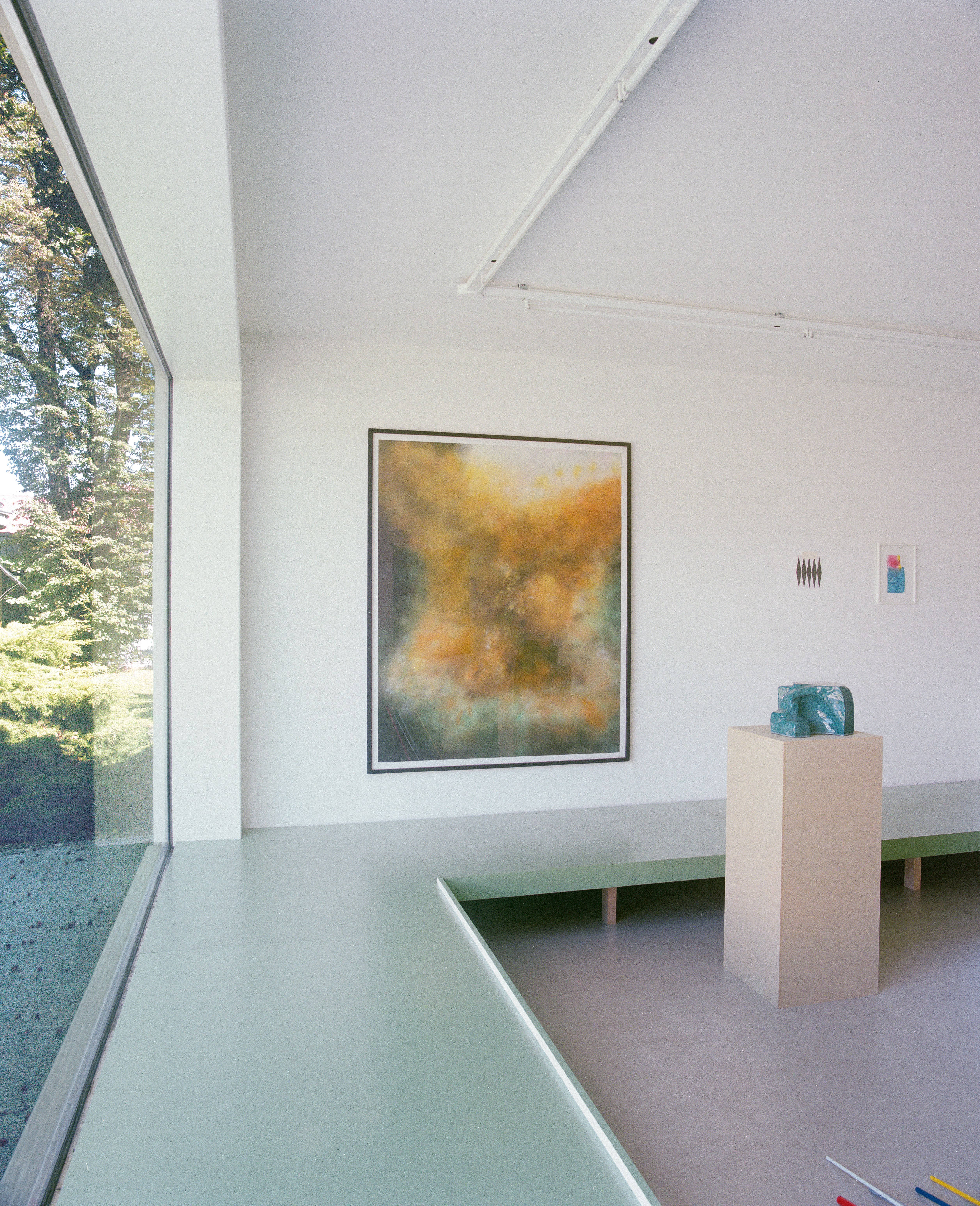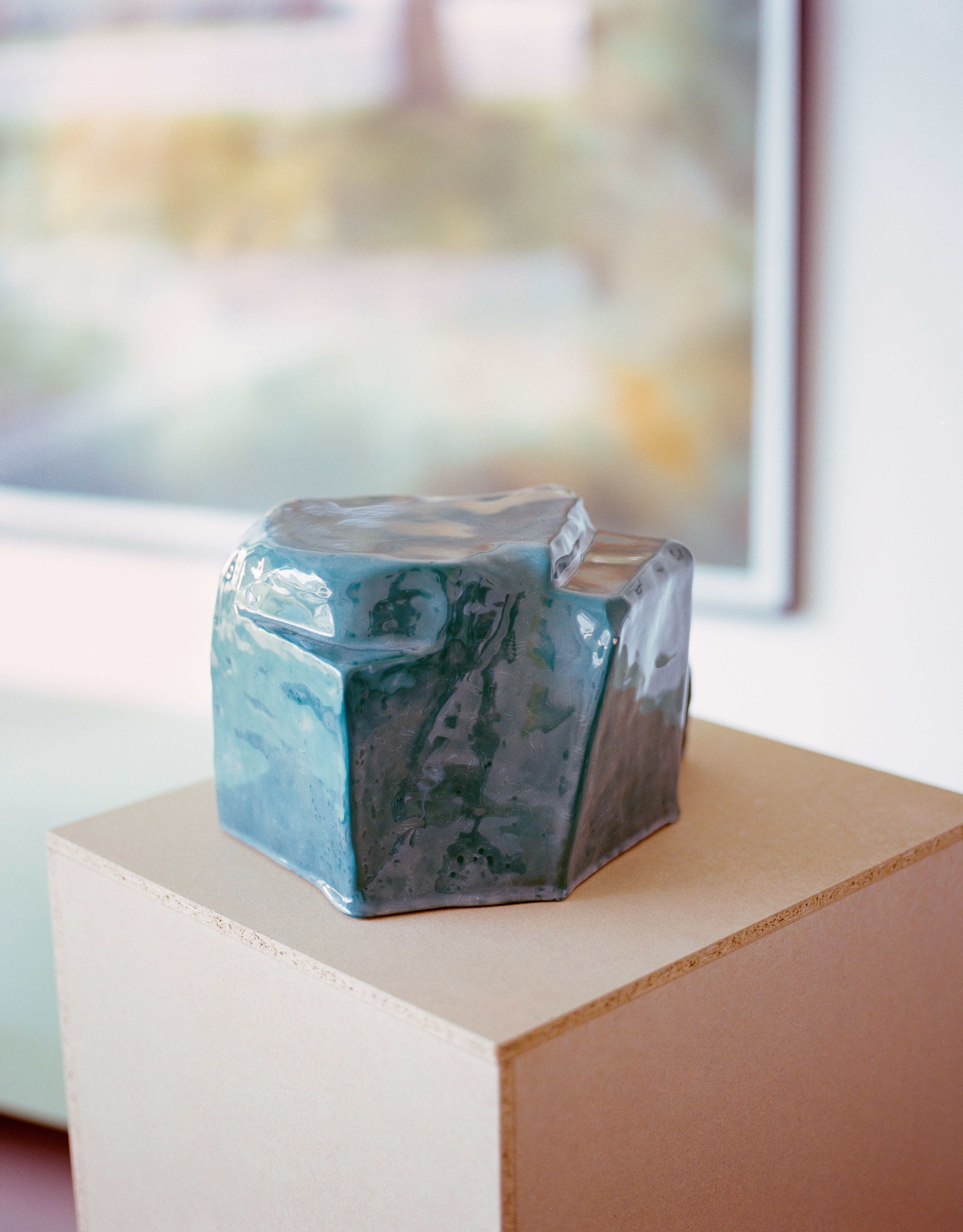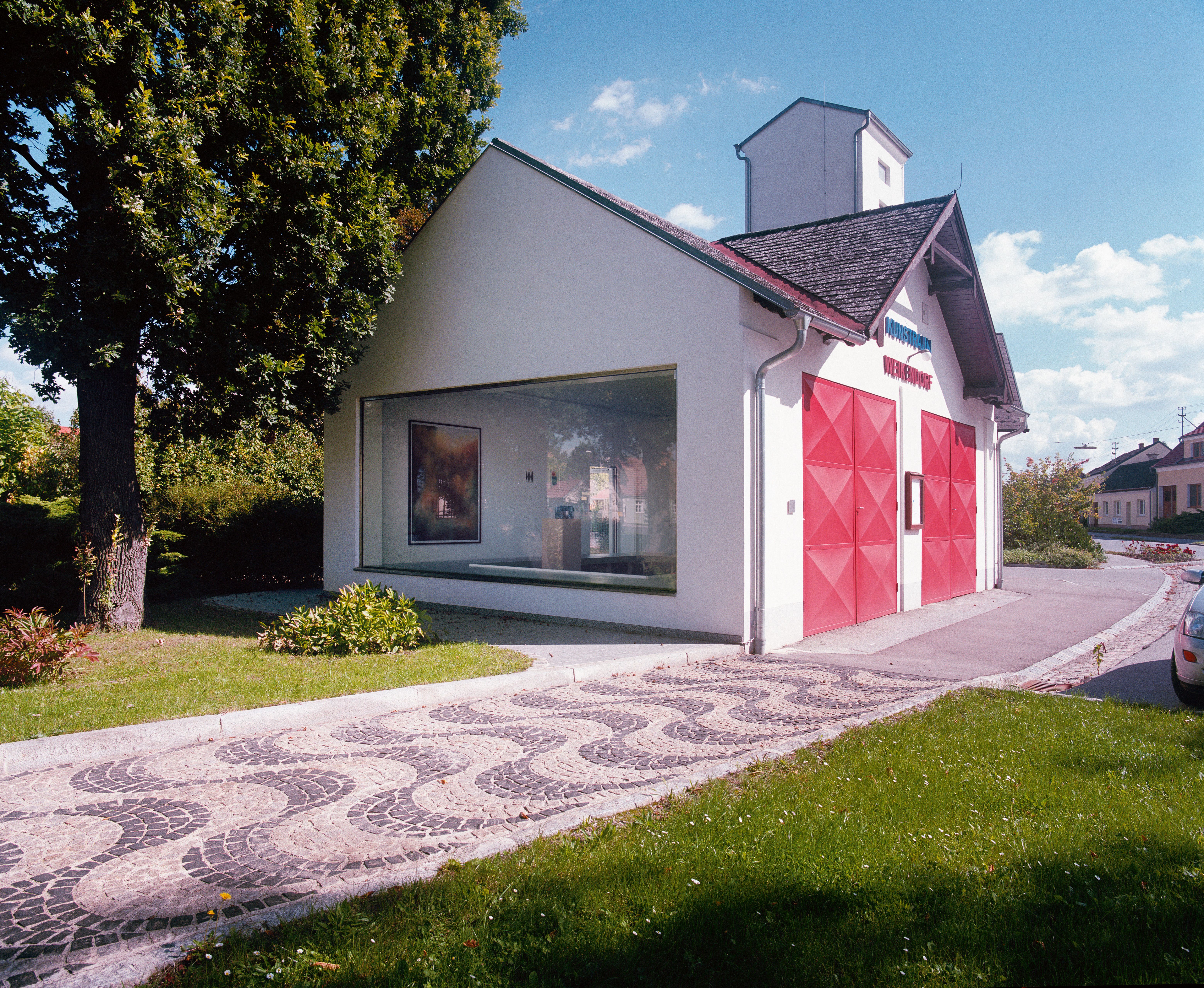Karina Bruckner,
Bernhard Rappold,
Markus Sulzbacher,
Carlos Vasconcelos,
Paul Wagner
:
Installation For the Kunstraum Weikendorf
Back
Information
A key element of the Kunstraum Weikendorf project is its continuing state of change. Artists are invited to complete temporary installations inside the space for six months each.
Fenster C (Window C) is a loose group of younger artists who both run an offspace based in Vienna and organise activities in public space in different constellations, as well as being publishers. The artists participating here pursue their own projects while also occasionally featuring as key protagonists of Fenster C, where they were invited to leave their urban sphere of influence and to interact in a rural setting.
Even though the installation consisted of works in a wide range of media by five artists it was intended to be read as a collaborative installation, a frequent feature of their conceptual strategy. The works were displayed in an installative arrangement in the Kunstraum, whereby the relevant personal authorship became secondary and remained unclear. The artists engaged with the spatial situation, the large shop window dominating the exterior view, opening the view in while preventing the viewer from coming closer. This function adopted the arrangement of the fountain, the stage and the walkway, and varied it.
An extract from the opening speech by Kathi Hofer: "I should just like to say one more thing about the exhibition. Although taking a diversion via Rancière and, indirectly as I'm speaking about impact, not about themes and motifs. It looks to me as if the artists have established a kind of "aesthetic regime" in Rancière's sense here, at the Kunstraum Weikendorf — and, to judge from how they work as well as in their sensitivity, they are romantics: When, as Rancière wrote, 'to romanticise' means to take things as alive and to 'play' with them, then something like the travel memory of the Goethe House in Weimar, where a garden path of colourful gravel forms enigmatic triangles, can be revived in an art space in Lower Austria; then a ramp that served in a stunt by Evel Knievel can lose its motor function and become abstract as a static triangle; or the arrangement of the folds of a Rococo skirt hem in a painting by Jean-Honoré Fragonard (The Happy Accidents of the Swing, 1767) translates directly into the bulging shape of a sculpture made of glass, window sealant foam and sausage skin. These and still more things are embedded into the lines, colours and volumes of this exhibition; although, so it appears to me, not with the intention of integrating an additional layer of significance but rather to favour a dissolution of any (original) meaning. And it seems to me that this emptying of meaning does not occur as a result of apathy or pure formalism but that an emancipatory stance is behind it here that neither wants to be didactic nor to define what art should be today, preferring to play instead, challenging the definitions and the didactic regimes, the frameworks, routines and the distribution of roles for making art."
(Michael Kienzer)
